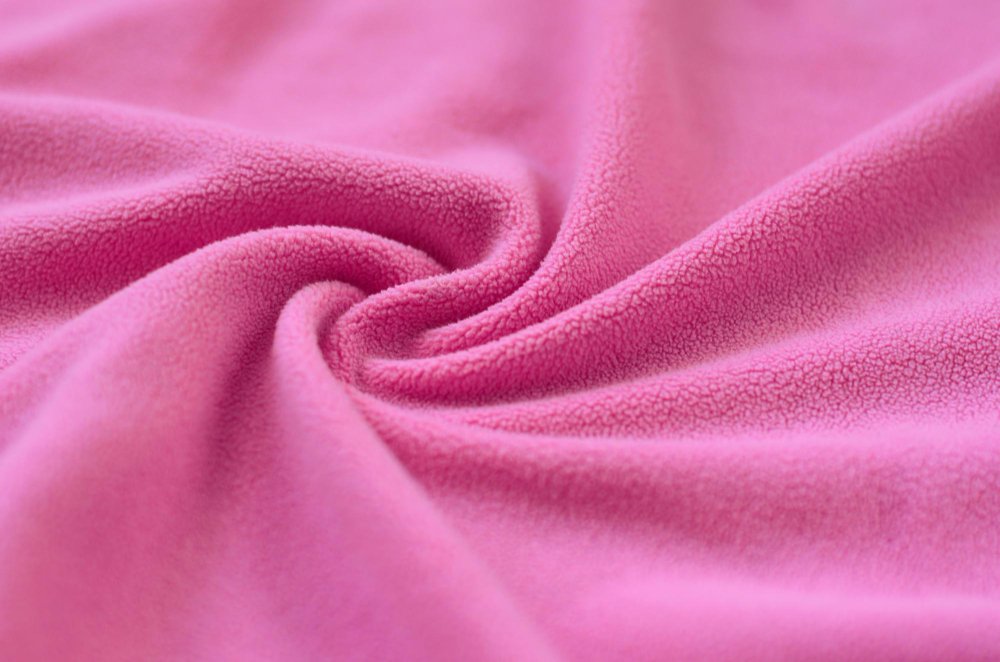Everything you need to know about this revolutionary synthetic textile that’s transforming cleaning, fashion, and home products
Quick Overview
- Microfiber is a synthetic fabric with fibers finer than silk, measuring less than 10 micrometers
- Made from polyester and polyamide (nylon), typically in 70/30 or 80/20 blends
- Absorbs 7 times its weight in liquid and traps 99% of bacteria without chemicals
- GSM (grams per square meter) determines thickness: 200-300 for glass, 300-500 for general use, 500+ for drying
- Lasts 500+ washes with proper care but sheds microplastics into waterways
Table of Contents
- What is Microfiber Fabric?
- How Microfiber is Made
- Understanding GSM Ratings
- Blend Ratios Explained
- Types of Microfiber Weaves
- Unique Properties and Benefits
- Applications and Uses
- How to Choose Quality Microfiber
- Complete Care Instructions
- Microfiber vs Cotton
- Disadvantages and Concerns
- Frequently Asked Questions
- Conclusion
What is Microfiber Fabric?
Microfiber is a synthetic textile made from ultra-fine fibers that measure less than one denier. To put this in perspective, a single microfiber is about 100 times finer than a human hair and thinner than silk. A square inch of microfiber fabric contains roughly 200,000 individual fibers, creating a dense material with unique cleaning and absorption properties.
The term “microfiber” refers to any fiber that’s 1.0 denier or less. One denier equals one gram per 9,000 meters of fiber. This extreme fineness gives microfiber its distinctive characteristics that set it apart from traditional fabrics like cotton or polyester.
Composition and Structure
Microfiber is typically made from two synthetic polymers: polyester and polyamide (also called nylon). The polyester forms the structural core of each fiber, providing strength and durability. Polyamide fills the spaces between polyester strands, adding softness, absorbency, and flexibility to the final fabric.
What makes microfiber special is its split-fiber construction. During manufacturing, the polyester core is split into star-shaped structures. These splits create microscopic hooks and channels that trap dirt, dust, and liquid much more effectively than smooth, round fibers found in traditional fabrics.
Is Microfiber Plastic or Cotton?
Microfiber is not cotton. It’s a petroleum-based synthetic plastic made from polyester and polyamide. While you might see “microfiber cotton” mentioned, this is typically a marketing term. True microfiber is always synthetic. However, some manufacturers create ultra-fine cotton fabrics that mimic microfiber properties but these are technically different materials.
How Microfiber is Made: The Manufacturing Process
Creating microfiber requires precision engineering that goes far beyond traditional textile production. The process starts with melting polyester and polyamide polymers, which are then forced through specialized metallic tubes rather than standard spinnerets.
Step-by-Step Production
- Polymer Preparation: Polyester and polyamide are melted at carefully controlled temperatures to prevent degradation of the polymers.
- Extrusion: The molten material is pushed through long metallic cooling tubes. These tubes are designed to create fibers as thin as 0.2 deniers, which is 200 times finer than standard cotton strands.
- Controlled Cooling: As the fibers exit the tubes, they must cool gradually to prevent breaking. This is one of the trickiest parts of production.
- Fiber Bonding: Heat bonds the polyester cores to polyamide strips, forming a web-like structure that gives microfiber its strength.
- Splitting Process: The bonded fibers are mechanically or chemically split to create the star-shaped cross-section that makes microfiber so effective at cleaning.
- Weaving or Knitting: The finished fibers are woven or knitted into fabric sheets using various techniques (terry, waffle, pearl weave).
- Surface Treatment: Final treatments may include dyeing, adding stain resistance, or creating electrostatic properties for specialized uses.
Watch: See the complete microfiber towels manufacturing process
Quality control happens at every stage, ensuring fibers meet specific denier measurements and proper split-fiber formation. This precision is why genuine microfiber performs so differently from cheap imitations.
Understanding GSM: The Key to Choosing Right Microfiber
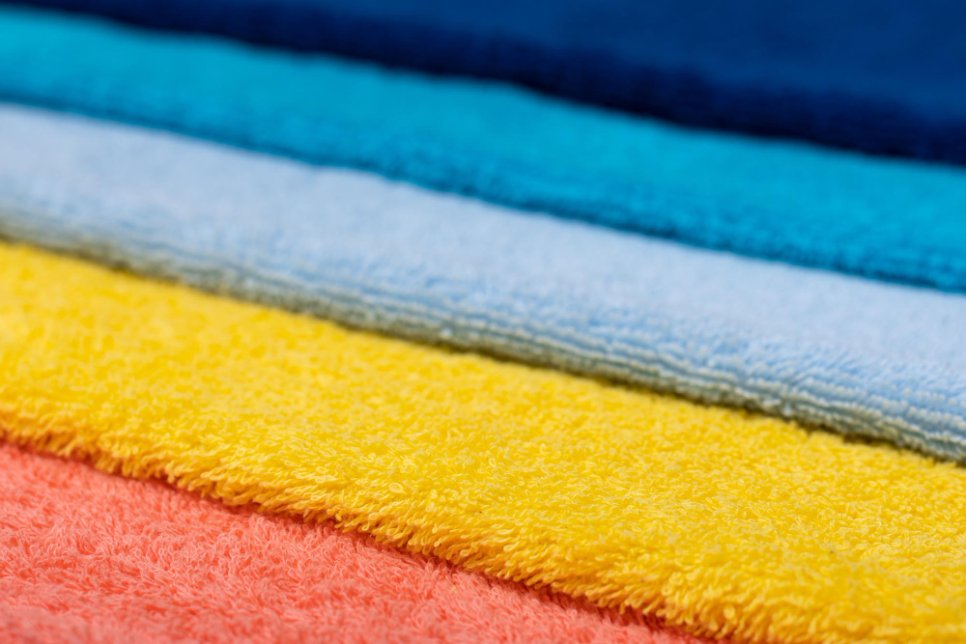
GSM stands for “grams per square meter” and measures the density and weight of microfiber fabric. Unlike thread count used for cotton sheets, GSM tells you how thick and absorbent your microfiber will be. This measurement is one of the most important factors in determining quality and appropriate use.
📊 Use Our Fabric Weight Calculator to determine the perfect GSM for your project
| GSM Range | Characteristics | Best Uses | Price Point |
|---|---|---|---|
| 150-250 | Thin, lightweight, more abrasive | Glass cleaning, screens, electronics, light dusting | $ |
| 250-350 | Medium weight, balanced performance | General cleaning, kitchen surfaces, countertops, bathrooms | $$ |
| 350-500 | Heavier, softer, more absorbent | All-purpose cleaning, polishing, removing wax or polish | $$ |
| 500-800 | Plush, highly absorbent, gentle | Car drying, drying dishes, final buffing on delicate surfaces | $$$ |
| 800-1200+ | Premium thickness, maximum absorption | Professional car detailing, premium drying, heavy-duty absorption | $$$$ |
GSM Quality Warning
Higher GSM Doesn’t Always Mean Better Quality
Some manufacturers inflate GSM numbers by using thick base layers of 100% polyester instead of quality split microfiber on the surface. This creates a heavier towel that weighs more but doesn’t clean or absorb well. Always check the blend ratio and look for split-fiber construction, not just high GSM numbers.
For bedding, look for microfiber sheets between 90-120 GSM. This range provides comfort, durability, and breathability for year-round sleep. Higher GSM sheets may feel too warm for summer use.
Blend Ratios: Why 70/30 and 80/20 Matter
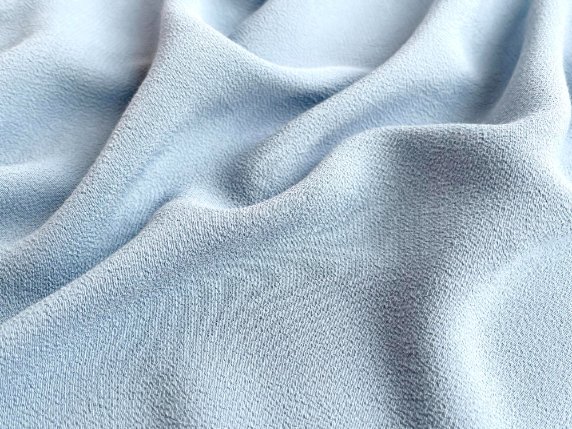
The ratio of polyester to polyamide dramatically affects how microfiber performs. You’ll commonly see these ratios on product labels: 70/30, 80/20, 90/10, or even 100% polyester. Here’s what they mean for you:
| Blend Ratio | Polyester % | Polyamide % | Performance | Best For |
|---|---|---|---|---|
| 70/30 | 70% | 30% | Softest, most absorbent, gentle on surfaces | Car paint, delicate surfaces, premium cleaning |
| 80/20 | 80% | 20% | Good balance of softness and durability | All-purpose cleaning, most household tasks |
| 90/10 | 90% | 10% | Rougher texture, less absorbent | Heavy-duty cleaning, industrial use only |
| 100/0 | 100% | 0% | Rough, can scratch, poor absorption | Avoid for most uses, especially delicate surfaces |
Why this matters: Polyester provides structure and durability, but polyamide adds the softness and water-absorbing capability that makes microfiber work. A 70/30 or 80/20 blend gives you the best combination of cleaning power without damaging surfaces.
Avoid 100% polyester “microfiber” products for anything that touches paint, screens, or glossy surfaces. The high polyester content creates a rough texture that can introduce scratches and swirl marks, especially on car paint or glass trim.
Types of Microfiber Weaves
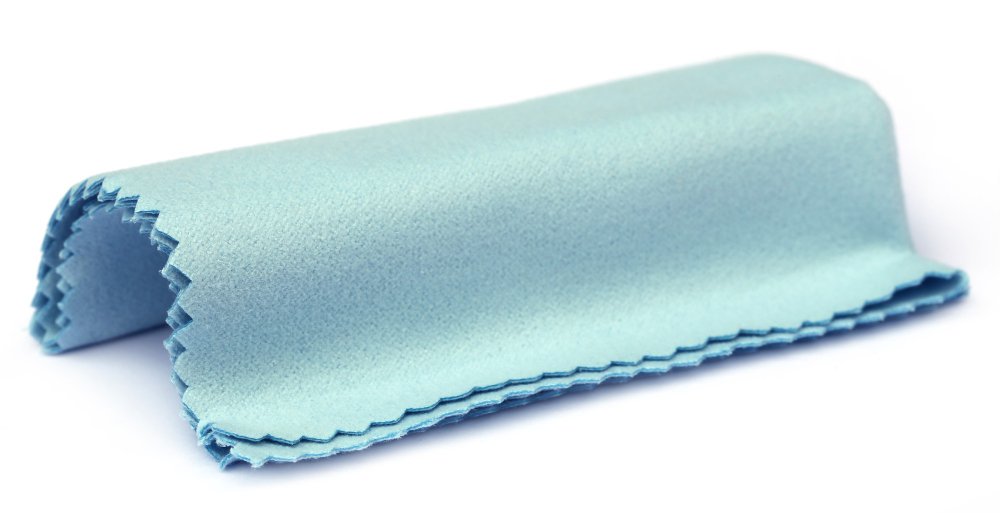
Not all microfiber looks or performs the same. The weave pattern changes how the fabric feels and what tasks it handles best. Understanding these differences helps you pick the right product for each job.
Terry Weave
This is the most common microfiber weave, with loops on the surface similar to a traditional towel. Terry weave microfiber is your go-to for general cleaning, drying, and most household tasks. The loops trap dirt and liquid effectively while remaining soft enough for most surfaces.
Waffle Weave
Waffle weave features a distinctive textured pattern with raised squares. This unique structure can absorb nearly 10 times its weight in water, despite typically having a lower GSM (350-400). The pockets in the weave create channels that pull water away from surfaces, making waffle weave perfect for drying cars, dishes, or any surface where you want streak-free results.
Pearl Weave
Pearl weave (also called diamond weave) has a tighter construction than terry weave and produces virtually no lint. This makes it the top choice for applying and leveling ceramic coatings on cars, cleaning glass, or working with paint protection film. The tight weave won’t leave fibers behind on your work surface.
Suede or Micro-Suede Finish
Suede microfiber has a smooth, velvety surface created by mechanically processing the fabric. This ultra-soft finish makes it perfect for cleaning delicate items like eyeglasses, camera lenses, phone screens, and jewelry. The lack of texture means zero scratch risk even on the most sensitive surfaces.
Unique Properties and Benefits
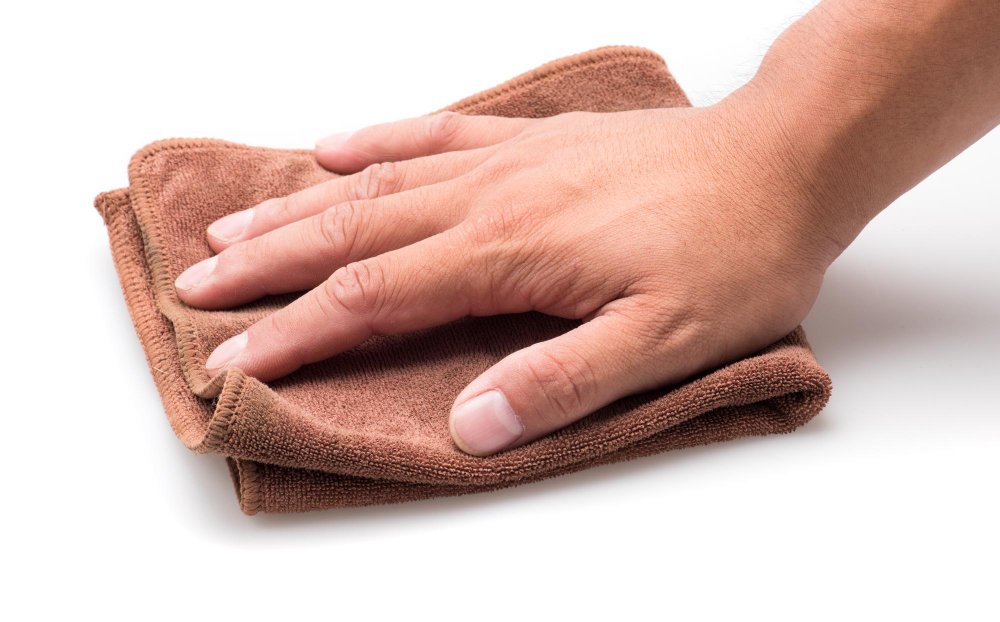
Microfiber’s split-fiber design gives it capabilities that traditional fabrics simply can’t match. Let’s look at what makes this material perform so differently.
Superior Absorbency
A quality microfiber cloth absorbs seven times its weight in liquid. Compare that to cotton, which absorbs only three times its weight. The split fibers create thousands of tiny channels that pull water into the fabric and hold it there through capillary action. This is why a single microfiber towel can dry an entire car or mop up significant spills without dripping.
Electrostatic Cleaning Power
Microfiber develops a positive electrical charge as you wipe surfaces. Dust and dirt particles carry negative charges, so they’re attracted to and trapped by the microfiber like a magnet. This electrostatic action means you can clean effectively with just water, no chemicals needed for most tasks.
Laboratory tests show this removes 98% of bacteria from surfaces, compared to only 30% removal with traditional cotton cloths. The difference comes from microfiber’s ability to physically trap microbes in its split fibers rather than just pushing them around.
Quick-Drying Nature
Microfiber dries 80% faster than cotton. The thin fibers have more surface area exposed to air, allowing moisture to evaporate quickly. This rapid drying prevents the musty smell and mildew growth that plagues damp cotton towels. It also means you can wash and reuse microfiber products multiple times in a single day if needed.
Durability and Longevity
High-quality microfiber withstands 500+ wash cycles without losing effectiveness. The synthetic fibers don’t break down like natural materials. This longevity offsets the higher initial cost (typically 30% more than cotton alternatives) since microfiber lasts five times longer. Hospitals report saving $12,000 annually by switching to reusable microfiber cleaning cloths.
Lint-Free Performance
Unlike cotton towels that shed fibers, quality microfiber leaves no lint behind. This makes it perfect for cleaning glass, mirrors, stainless steel, and electronics where even tiny fibers would be visible. The exception is some micro-suede blends where the surface has been mechanically processed for extra softness.
Applications: From Cleaning to Fashion
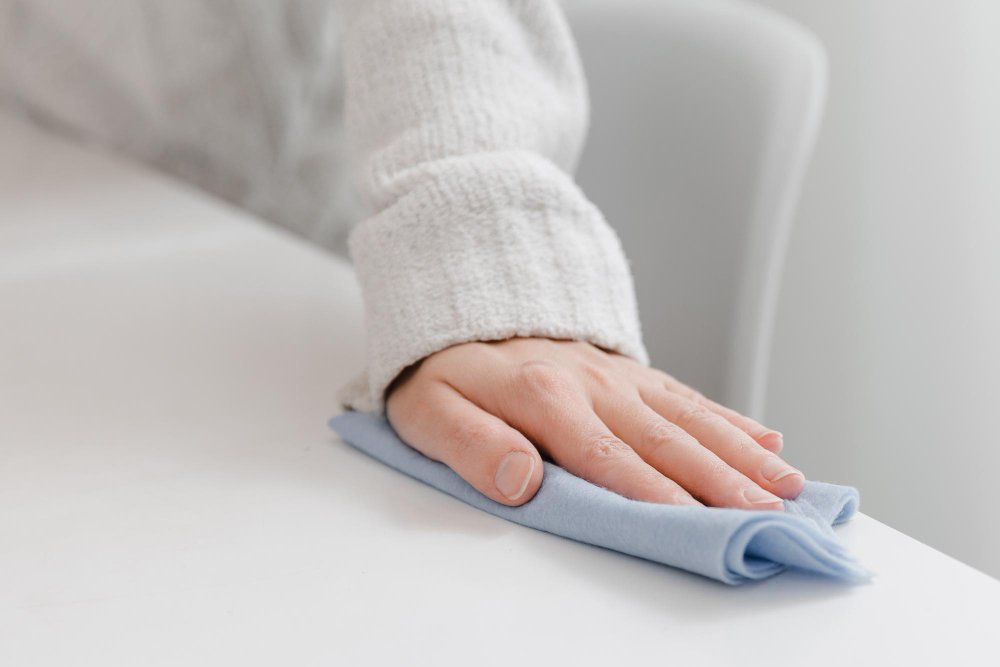
Microfiber’s versatility shows up across multiple industries. Here’s where you’ll encounter this material and why it works so well for each application.
Household Cleaning
This is where microfiber first made its mark. The split-fiber design lifts and traps 99% of surface contaminants without chemicals. One study found microfiber reduces cleaning time by 40% compared to cotton alternatives.
In kitchens, microfiber towels absorb spills instantly while resisting odors. Their quick-drying nature prevents mildew growth on damp surfaces. For bathrooms, the bacteria-trapping ability makes them more hygienic than traditional cleaning cloths. Glass and stainless steel surfaces get streak-free results with minimal effort.
Proper Cleaning Technique
Fold your microfiber cloth into quarters to give yourself eight clean surfaces to work with. Use one side, then flip to a fresh surface. Rinse frequently to maintain cleaning power. Never use fabric softener in the wash as it clogs the fibers and destroys absorbency.
Automotive Care
Professional detailers depend on microfiber for several reasons. Different GSM ratings handle specific tasks: 200-300 GSM for interior cleaning, 350-500 GSM for polish removal and general detailing, and 500-1100+ GSM for drying paint without scratching.
The soft fibers won’t introduce swirl marks or scratches on clear coat finishes. Car interiors benefit from microfiber’s ability to lift dust and grime from textured plastics without leaving residue. Waffle weave towels can dry an entire vehicle with just one or two cloths.
Clothing and Fashion
In apparel, microfiber serves multiple purposes. Athletic wear uses it for moisture-wicking properties. The fibers pull sweat away from skin and allow it to evaporate quickly on the outer surface, keeping athletes dry and comfortable.
Fashion designers use microfiber to create wrinkle-resistant skirts, jackets, and structured garments. The material holds its shape better than many natural fabrics. Microfiber can also mimic luxury textures. Ultrasuede, a branded microfiber product, replicates the look and feel of suede leather at a fraction of the cost, and it’s machine washable.
For accessories, microfiber offers a durable, affordable alternative to leather. Handbags, wallets, shoes, and phone cases made from microfiber are lighter than leather, easier to clean, and can be treated with water-resistant coatings.
Home Textiles
Microfiber bedding offers several advantages over cotton sheets. The tightly woven fibers block dust mites and allergens, making them ideal for people with allergies. They’re wrinkle-resistant right out of the dryer. Temperature regulation works well for most sleepers, though some find microfiber slightly warmer than cotton in hot weather.
For furniture upholstery, microfiber resists staining thanks to its tight weave. Liquids bead on the surface rather than soaking in, giving you time to blot spills before they set. It’s also pet-friendly since pet hair doesn’t embed in the fabric and can be easily removed with a lint roller.
Industrial and Medical Applications
Hospitals use microfiber mops and cleaning cloths because they trap bacteria instead of spreading it. The material’s ability to clean with just water reduces chemical exposure for patients and staff. HVAC systems rely on microfiber filters to capture particles as small as 0.3 microns, including viruses and fine dust.
In cleanrooms for electronics manufacturing or pharmaceutical production, microfiber’s lint-free nature makes it the only acceptable cleaning material. The cloths won’t shed fibers that could contaminate sensitive products.
How to Choose Quality Microfiber: The Tests That Matter
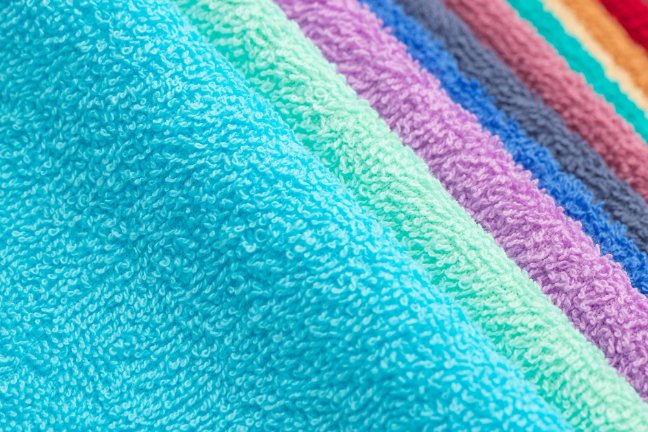
Not all microfiber delivers the same performance. Here are four practical tests you can do at home to separate quality products from cheap imitations.
The Weight Test
A quality all-purpose microfiber towel should weigh at least 250 GSM. Check product specifications online since most manufacturers list GSM. If they don’t list it, that’s a red flag. More microfiber means better absorption and durability.
The Sunlight Test
Hold the towel up to a light source. If you see significant sunlight passing through, the weave is too loose. Quality microfiber has a tight, dense construction that blocks most light. This density is what traps dirt and liquid effectively.
The Stretch Test
Try stretching the towel gently. If it stretches easily or you can see the weave opening up, it won’t hold up to repeated use. Quality microfiber has structural integrity that resists stretching.
The Water Test
This is the most revealing test. Pour a small amount of water on a clean surface. Try to absorb it with your microfiber cloth without applying pressure, just laying it on the water. Quality microfiber should pull the water up immediately through capillary action. If you have to press or wipe to absorb the water, the fibers aren’t split properly.
Quick Quality Checklist
- Check for 70/30 or 80/20 blend ratio on the label
- Verify minimum 250 GSM for cleaning cloths
- Look for “split microfiber” specification
- Check edges are properly sewn to prevent fraying
- Avoid products that don’t list GSM or blend ratio
- Be wary of unusually cheap prices (quality microfiber costs more to produce)
Complete Care Instructions: Making Microfiber Last
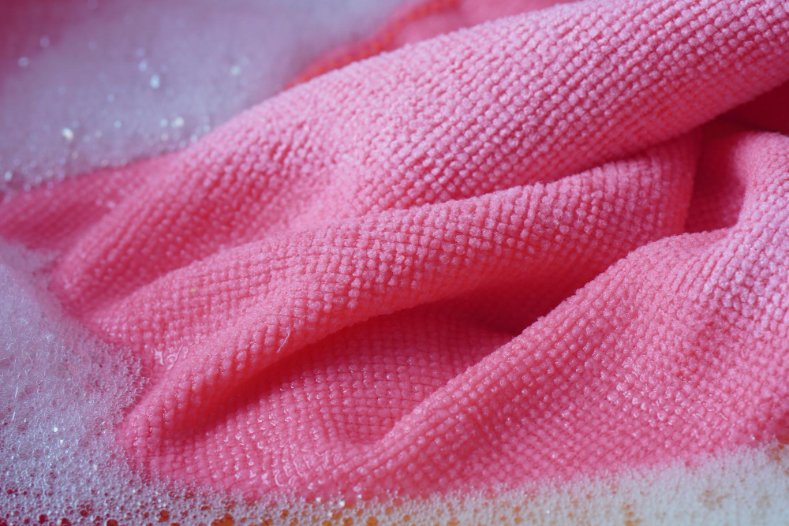
Proper care extends microfiber’s lifespan and maintains its performance. The good news is that caring for microfiber is straightforward once you know what to avoid.
🧺 Use Our Fabric Care Calculator for personalized washing instructions
Washing Microfiber
Do’s:
- Wash microfiber separately from other fabrics to avoid lint transfer and the “velcro effect” where microfiber picks up debris from other materials
- Use cold or warm water (below 140°F/60°C)
- Choose regular liquid laundry detergent without added oils or moisturizers
- Wash similar colors together to prevent color bleeding
- Pre-soak heavily soiled towels in water with a small amount of all-purpose cleaner
- Run an extra rinse cycle to remove all detergent residue
Don’ts:
- Never use fabric softener (liquid or dryer sheets). The oils and cationic surfactants clog the split fibers and destroy absorbency. This is the number one mistake people make
- Avoid bleach, which breaks down the polyamide fibers over time
- Don’t use hot water above 140°F, as it can melt or warp the synthetic fibers
- Skip soap-based or self-softening detergents that leave oily residue
- Don’t overload the washing machine; microfiber needs space to agitate properly
Can You Put Microfiber in the Dryer?
Yes, but with important precautions. Use low heat or air dry settings only. High heat (above 140°F/60°C) can melt the synthetic fibers, causing them to become stiff or even melt together. The good news is microfiber dries quickly even on low heat, usually within 20-30 minutes.
For best results, remove microfiber from the dryer while slightly damp and allow it to finish air drying. This prevents any heat damage and keeps fibers soft. Never leave microfiber in a hot car or in direct sunlight for extended periods, as this can also degrade the material.
Can You Iron Microfiber?
Generally, you shouldn’t need to iron microfiber since it’s naturally wrinkle-resistant. If you must remove wrinkles from microfiber clothing or bedding, use the lowest heat setting on your iron and place a pressing cloth between the iron and the microfiber. Never use steam or high heat, as this will damage the synthetic fibers permanently.
For microfiber sheets, simply pull them straight from the dryer and put them on the bed immediately to prevent any wrinkles from setting.
Does Microfiber Shrink When Washed?
Quality microfiber should not shrink with proper care. However, exposure to high heat (hot water or high dryer temperatures) can cause some shrinkage and damage the fiber structure. This is why cold or warm water and low dryer heat are so important. If your microfiber has shrunk, it was likely exposed to temperatures above 140°F.
How Often Should You Wash Microfiber?
For cleaning cloths, wash after each use if they’ve been used for heavy cleaning, greasy surfaces, or bathrooms. For light dusting or glass cleaning, you can use them 2-3 times before washing. Microfiber bedding should be washed every 1-2 weeks, similar to cotton sheets. Microfiber clothing follows normal washing schedules based on wear.
Storage Tips
Store clean, completely dry microfiber in a sealed container or drawer away from dust and lint. Keep different colors separated to prevent any color transfer. Don’t store microfiber towels with other fabric types, as they can absorb chemicals or oils from other materials even when not in use.
What Ruins Microfiber?
The top three microfiber killers are: 1) Fabric softener (clogs fibers permanently), 2) High heat (melts and stiffens fibers), and 3) Bleach (breaks down polyamide). Avoid these and your microfiber will last for years.
Microfiber vs Cotton: The Complete Comparison
The “microfiber or cotton” debate comes up constantly. The truth is, each material has strengths for different situations. Here’s an honest comparison to help you decide.
⚖️ Compare Fabrics Side-by-Side with our interactive tool
| Feature | Microfiber | Cotton | Winner |
|---|---|---|---|
| Absorbency | 7x its weight | 3x its weight | Microfiber |
| Drying Speed | 80% faster | Slower, prone to mildew | Microfiber |
| Cleaning Power | Traps 99% of bacteria | Smears 40% of debris | Microfiber |
| Durability | 500+ washes | 200 washes | Microfiber |
| Environmental Impact | Sheds microplastics | Biodegradable, renewable | Cotton |
| Breathability | Good but synthetic feel | Excellent, natural feel | Cotton |
| Initial Cost | 30% higher | Lower upfront | Cotton |
| Long-term Value | Better (lasts 5x longer) | Needs frequent replacement | Microfiber |
| Allergy-Friendly | Blocks dust mites | Can harbor allergens | Microfiber |
| Hot Weather Comfort | Can feel warm | Cooler, more breathable | Cotton |
Is Microfiber Better Than Cotton?
For cleaning tasks, microfiber wins hands down. It cleans better, lasts longer, and works without chemicals. For bedding, the choice depends on personal preference. If you sleep hot or prefer natural materials, stick with cotton. If you have allergies, want easy care, or live in a moderate climate, microfiber sheets work beautifully.
For towels, microfiber excels at drying (cars, dishes, quick-dry gym towels) while cotton feels more luxurious for bath towels. Many people keep both types and use them for different purposes.
What About Microfiber vs Polyester?
This question confuses people because microfiber is made from polyester. The difference is in fiber thickness. Regular polyester fabric uses fibers of 2.5+ deniers, while microfiber uses fibers of 1.0 denier or less. This makes microfiber softer, more absorbent, and better at trapping particles than standard polyester fabric.
Think of it this way: all microfiber contains polyester, but not all polyester is microfiber. For more details on polyester, check out our complete guide.
Disadvantages and Environmental Concerns
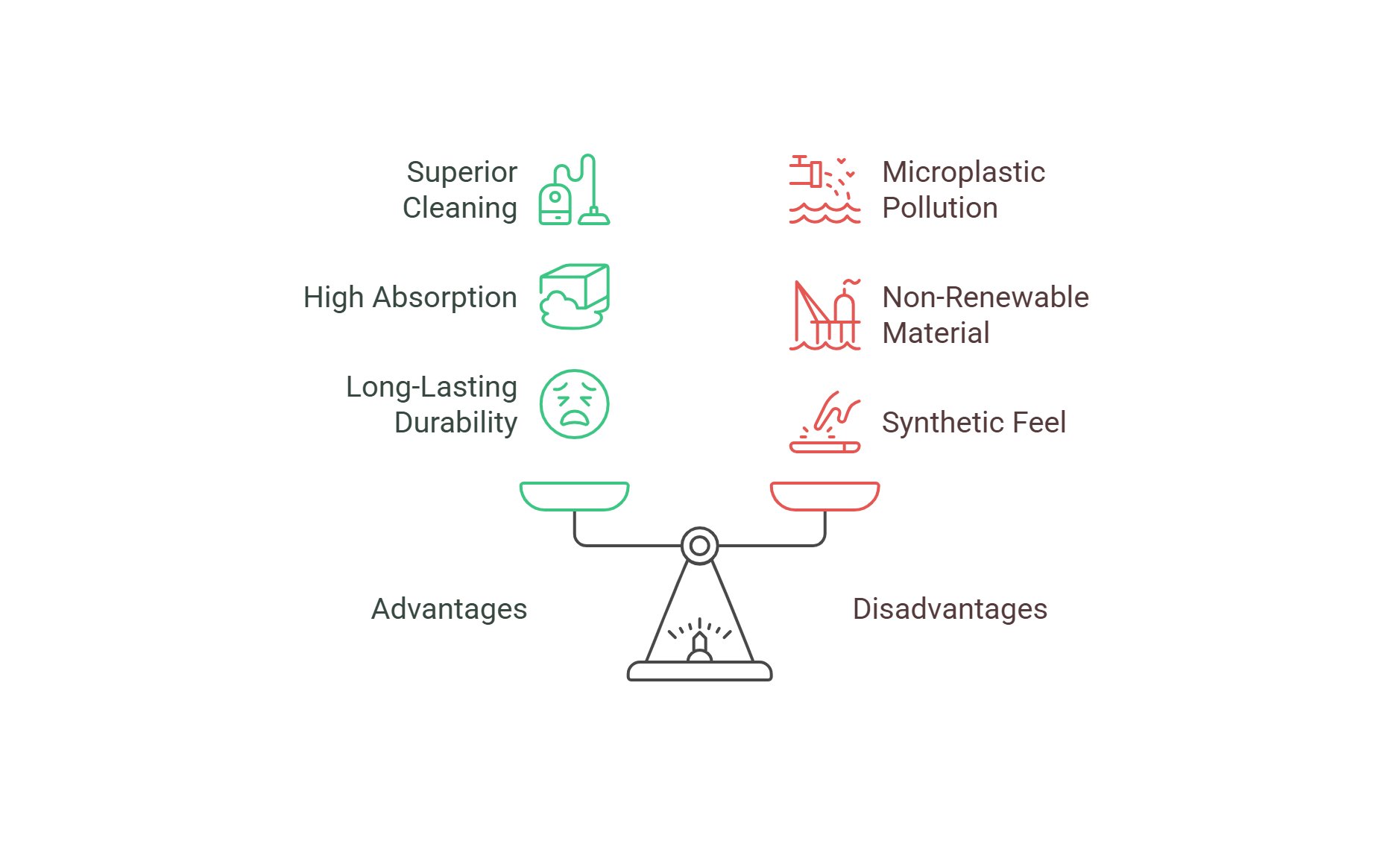
While microfiber offers impressive performance, it’s not perfect. Understanding the downsides helps you make informed choices and use the material responsibly.
Microplastic Pollution
This is the biggest environmental concern with microfiber. Each wash cycle releases up to 700,000 microscopic plastic fibers into wastewater. These microplastics make up an estimated 35% of oceanic plastic pollution according to NOAA research. They enter the food chain when consumed by marine life and can accumulate in human tissues.
Solutions you can implement:
- Use a Guppyfriend washing bag that traps fibers during washing (reduces shedding by 86%)
- Install filters on your washing machine (can capture 87% of microfibers with 150-200 micron mesh)
- Wash microfiber less frequently when possible
- Choose microfiber products made from recycled materials (now available with 70% post-consumer plastics)
- Look for biodegradable microfiber alternatives currently in development
The EPA’s microplastics research program is actively studying solutions to reduce textile fiber pollution in waterways.
Petroleum Dependency
Microfiber is derived from petroleum, a non-renewable resource. Manufacturing requires significant energy and produces greenhouse gases. However, the material’s durability creates a counterpoint: one microfiber towel lasting 500 washes replaces 10+ cotton towels over the same period, potentially reducing overall resource consumption.
Not Truly Breathable
Despite marketing claims, microfiber can’t match natural fibers for breathability. The synthetic material traps more heat and moisture against your skin compared to cotton or linen. This makes microfiber less comfortable for hot weather clothing or for people who sleep hot.
Can Feel Uncomfortable
Some people find microfiber’s texture off-putting. It can feel “squeaky” or synthetic against skin. The electrostatic properties that make it great for cleaning can make it stick to dry skin uncomfortably. This is very personal; some people love the feel while others dislike it intensely.
Bacterial Growth Concerns
While microfiber removes bacteria effectively from surfaces, the trapped bacteria can multiply in damp towels if not washed promptly. The material’s quick-drying nature helps, but you need to wash microfiber cleaning cloths after each use for bathroom or kitchen cleaning to prevent bacteria buildup.
Fire Hazard
Microfiber is flammable and can melt when exposed to high heat. It emits toxic gases when burning. Keep microfiber away from open flames, heaters, and hot surfaces. This makes it unsuitable for kitchen items like pot holders or oven mitts.
Why is Microfiber So Cheap?
If you see extremely cheap microfiber, be skeptical. Quality microfiber actually costs more than cotton due to the complex manufacturing process. Very cheap products are usually 90/10 or 100% polyester blends with poor split-fiber construction. They won’t perform well and might scratch delicate surfaces.
Advantages Summary
- Superior cleaning without chemicals
- 7x absorption vs cotton
- Lasts 500+ washes
- Dries 80% faster
- Traps 99% of bacteria
- Hypoallergenic for most people
- Wrinkle-resistant
- Lint-free performance
Disadvantages Summary
- Sheds microplastics into waterways
- Made from non-renewable petroleum
- Less breathable than natural fibers
- Can feel synthetic/uncomfortable
- Requires careful washing (no softener)
- Sensitive to high heat
- Not biodegradable
- Higher initial cost
Frequently Asked Questions
What fabric is microfiber?
Microfiber is a synthetic fabric made from polyester and polyamide (nylon) polymers. The fibers are split during manufacturing to create ultra-fine strands less than 1.0 denier in thickness. It’s not a natural fabric and contains no cotton or plant fibers.
Is microfiber good for clothing?
Microfiber works well for activewear, wrinkle-resistant travel clothes, and structured garments like jackets and skirts. It wicks moisture effectively and holds its shape. However, it’s less breathable than natural fabrics for hot weather. Many people prefer natural fibers for everyday clothing but use microfiber for specific performance needs.
Is microfiber bad for allergies?
Actually, microfiber is generally excellent for people with allergies. The tight weave blocks dust mites and prevents allergen accumulation better than cotton. Microfiber bedding can reduce allergy symptoms for many people. However, a tiny percentage of individuals may have skin sensitivity to synthetic materials. If you have concerns, test a small microfiber product first.
Is microfiber safe for sensitive skin?
For most people, yes. The soft texture is gentle on sensitive skin, and OEKO-TEX certified microfiber is tested for harmful substances. However, people with very dry skin might find the synthetic texture less comfortable than natural fibers. If you have eczema or severe skin sensitivity, test before committing to microfiber bedding.
Is microfiber like silk or velvet?
Microfiber is finer than silk (less than 1.0 denier vs silk’s 1.25 denier) but feels different. Quality microfiber has a soft, smooth texture, though it’s not as luxurious as real silk. Some microfiber suede finishes can feel similar to velvet but with a synthetic quality. The feel varies significantly based on GSM, weave, and finishing treatments.
Can you wash dishes with microfiber cloths?
Yes, microfiber works great for washing dishes. The material cleans effectively with minimal soap and won’t scratch dishes or cookware. However, use separate cloths for dishes versus other cleaning tasks to avoid cross-contamination. Wash dish cloths after each use since trapped food particles can harbor bacteria.
Why do my microfiber towels leave lint?
Quality microfiber shouldn’t leave lint. If yours does, you likely have a low-quality product with poor fiber construction, or you’ve washed it with fabric softener which breaks down the fibers. Some micro-suede blends naturally shed slightly due to surface processing. Check your blend ratio and avoid 100% polyester products.
Does microfiber hold bacteria?
Microfiber removes bacteria from surfaces very effectively but can hold those bacteria in its fibers if not washed promptly. Damp microfiber cloths can allow bacteria to multiply. The key is washing cleaning cloths after each use and ensuring they dry completely between uses. The quick-drying nature helps prevent bacterial growth compared to cotton.
Do hotels use microfiber or cotton sheets?
Most high-end hotels still use cotton sheets (typically percale or sateen weaves with 300+ thread count) because guests associate cotton with luxury. However, some budget hotels and vacation rentals use microfiber sheets due to their durability, wrinkle-resistance, and easy care. The hospitality industry is gradually adopting microfiber for towels and cleaning supplies.
Is microfiber good for skin?
For most people, yes. The soft texture is gentle on sensitive skin, and the hypoallergenic properties prevent irritation. Microfiber cloths work well for makeup removal and facial cleansing with just water. However, people with very dry skin might find the synthetic texture less comfortable than natural fibers.
What are the coolest sheets to sleep on?
For hot sleepers, cotton percale, linen, or bamboo sheets typically sleep cooler than microfiber. These natural materials allow better airflow and moisture wicking. Microfiber can trap heat due to its synthetic nature and tight weave. If you want microfiber sheets but sleep hot, look for lower GSM (90-100) and avoid high-pile or brushed finishes.
Is microfiber good for hot weather?
Microfiber is not the best choice for hot weather clothing or bedding. While it does wick moisture, it doesn’t breathe as well as natural fibers like cotton or linen. For hot climates, stick with natural fabrics. However, microfiber works fine for quick-dry towels or activewear where moisture-wicking matters more than breathability.
Are microfiber towels 100% polyester?
Quality microfiber towels are not 100% polyester. They should be a blend of polyester and polyamide (nylon), typically 70/30 or 80/20. The polyamide adds the softness and absorbency that makes microfiber work. Avoid 100% polyester products marketed as “microfiber” as they’ll be rough and less absorbent.
Is 100% microfiber good?
The term “100% microfiber” is confusing. It means the product is entirely made from microfiber material (as opposed to a blend with cotton or other fibers), but the microfiber itself should still be a polyester/polyamide blend. Check the specific composition. True “100%” means it’s all synthetic, which is standard for microfiber products.
What is another name for microfiber?
Microfiber is also called microfibre (British spelling), ultra-suede (for suede-finished microfiber), or micro-suede. Brand names include Ultrasuede (developed by Toray Industries) and Alcantara (used in automotive interiors). Some products use “performance fabric” as a marketing term for microfiber.
How long will microfiber last?
Quality microfiber lasts 500+ wash cycles with proper care, which translates to 3-5 years of regular use for cleaning cloths. Microfiber bedding can last 5-7 years. The key is avoiding fabric softener and high heat. Cheap microfiber might only last 50-100 washes before losing effectiveness.
Will water ruin microfiber?
No, water won’t ruin microfiber. In fact, microfiber is designed to get wet and handle moisture. It’s highly water-absorbent and dries quickly. However, leaving microfiber damp for extended periods can allow bacteria or mildew growth. Always let it dry completely between uses.
Should microfiber be washed hot or cold?
Wash microfiber in cold or warm water (below 140°F/60°C). Hot water can damage the synthetic fibers, causing them to lose their split structure and effectiveness. Cold water cleans microfiber perfectly well and extends its lifespan. This also saves energy compared to hot water washing.
Can microfiber go in the dryer?
Yes, but only on low heat or air dry settings. High heat above 140°F can melt or damage the synthetic fibers. Microfiber dries quickly even on low heat (usually 20-30 minutes). For best results, remove while slightly damp and air dry the rest of the way.
Why can’t you tumble dry microfiber?
You can tumble dry microfiber, but only on low heat. High heat tumble drying will melt the synthetic fibers and ruin their performance. The warning against tumble drying typically refers to high heat settings, not the dryer itself.
Do microfiber cloths need special detergent?
No, regular liquid laundry detergent works fine for microfiber. However, avoid detergents with fabric softener, oils, or moisturizers built in. Some people use specialized microfiber cleaning packets that are formulated to remove oils and restore fiber performance, but regular detergent is adequate for normal use. Skip powder detergent as it doesn’t dissolve as completely.
Why can’t you use fabric softener on microfiber?
Fabric softener coats fibers with oils and cationic surfactants that clog the microscopic splits in microfiber. This destroys the absorbency and cleaning power permanently. Once fabric softener clogs the fibers, the damage cannot be reversed. This is the most common way people ruin microfiber products.
Can microfiber be 100% cotton?
No. By definition, microfiber is a synthetic material made from polyester and polyamide. “Microfiber cotton” is a marketing term and not technically accurate. Some manufacturers make ultra-fine cotton fabrics that mimic microfiber properties, but these are not true microfiber.
Is 100% polyester the same as microfiber?
No. While microfiber contains polyester, 100% polyester fabric is not necessarily microfiber. The difference is fiber thickness. Microfiber must have fibers of 1.0 denier or less. Regular polyester uses much thicker fibers (2.5+ deniers). This makes microfiber softer and more absorbent than standard polyester.
Which is better, polyester or microfiber?
Microfiber is better for cleaning, absorbency, and softness because its ultra-fine fibers (under 1.0 denier) create more surface area and split-fiber construction. Regular polyester is better for durability in outdoor applications and costs less. Remember that microfiber is made from polyester, but with much finer fibers.
Is wool or microfiber better?
It depends on your needs. Wool is better for warmth, breathability, and natural temperature regulation. It’s also renewable and biodegradable. Microfiber is better for cleaning, quick-drying applications, and people with wool allergies. For bedding, wool is warmer and more breathable; microfiber is easier to care for and costs less.
What is better, 100% cotton or microfiber?
For cleaning: microfiber wins with 7x absorption and 99% bacteria removal. For breathability and natural feel: cotton wins. For durability: microfiber lasts 500+ washes vs cotton’s 200. For environment: cotton is biodegradable while microfiber sheds microplastics. Choose based on your priority and application.
Which one is better, cotton or microfiber?
Neither is universally “better.” Cotton excels in breathability, natural feel, and environmental friendliness. Microfiber excels in cleaning power, durability, and allergen resistance. Most people benefit from having both and using each where it performs best.
Is microfiber towel better than cotton?
For drying cars, dishes, or quick-dry needs: yes. Microfiber absorbs 7x its weight, dries 80% faster, and lasts longer. For bath towels: cotton feels more luxurious and breathable. For cleaning: microfiber is superior, trapping 99% of bacteria without chemicals.
What does 100% microfiber feel like?
Quality 100% microfiber feels soft, smooth, and slightly synthetic. Lower GSM microfiber feels thin and silky, while higher GSM feels plush and velvety. Some describe it as similar to suede or peach skin. The texture is smoother than cotton but less natural-feeling. Some people love it; others find it too synthetic.
Conclusion
Microfiber represents a significant step forward in synthetic textile technology. Its ability to clean surfaces with just water, absorb seven times its weight in liquid, and last for 500+ wash cycles makes it a practical choice for many applications. The material’s unique split-fiber construction creates performance characteristics that traditional fabrics simply cannot match.
For cleaning purposes, microfiber is hard to beat. It removes 99% of bacteria without chemicals, reduces cleaning time by 40%, and saves money in the long run despite higher upfront costs. Hospitals, professional cleaners, and car detailers rely on it for good reason. If you’re still using cotton rags or paper towels for cleaning, switching to quality microfiber will noticeably improve your results.
In fashion and home textiles, microfiber fills specific niches effectively. It excels at wrinkle-resistant travel clothes, moisture-wicking activewear, and hypoallergenic bedding. However, it can’t fully replace natural fibers for breathability and comfort, especially in hot weather. Most people benefit from having both microfiber and natural fiber products, using each where it performs best.
The environmental concerns are real and shouldn’t be dismissed. Microplastic pollution from washing microfiber products contributes to ocean contamination and enters the food chain. If you choose microfiber, use washing bags to capture shed fibers, wash less frequently when possible, and look for products made from recycled materials. The industry is developing biodegradable alternatives that may solve this problem in the future.
Key Takeaways and Recommendations
Whether microfiber works for you depends on your priorities. If you value performance, durability, and low-maintenance care, microfiber delivers. If you prioritize sustainability, natural feel, and breathability, you might prefer natural fabrics. Many people find that a combination approach works best, using microfiber where it truly shines and natural fibers everywhere else.
The technology continues to evolve. Manufacturers are improving recycled content, developing biodegradable versions, and refining production methods to reduce environmental impact. As these improvements arrive, microfiber may solve its current drawbacks while retaining its performance advantages.
For now, make informed choices. Understand what you’re buying, care for it properly, and use it responsibly. Quality microfiber products, used appropriately and cared for correctly, can serve you well for years while reducing the need for chemical cleaners and frequent replacements.
Ready to get started? Use our Fabric Weight Calculator to determine the perfect GSM for your needs, or explore our Fabric Care Calculator for personalized washing instructions that will keep your microfiber performing at its best.

